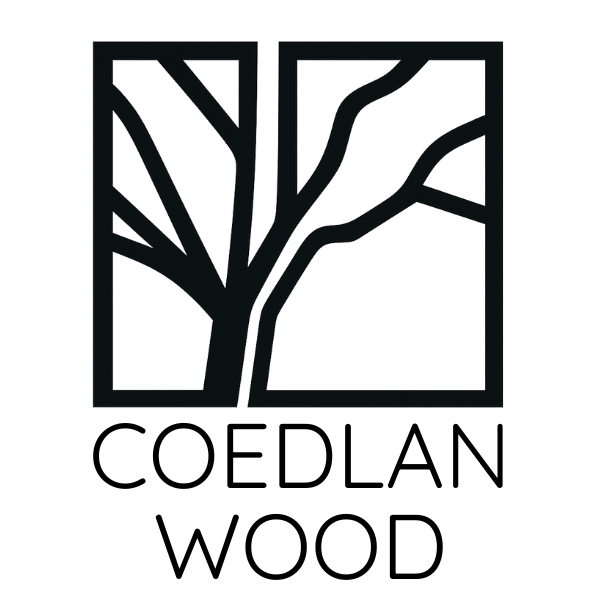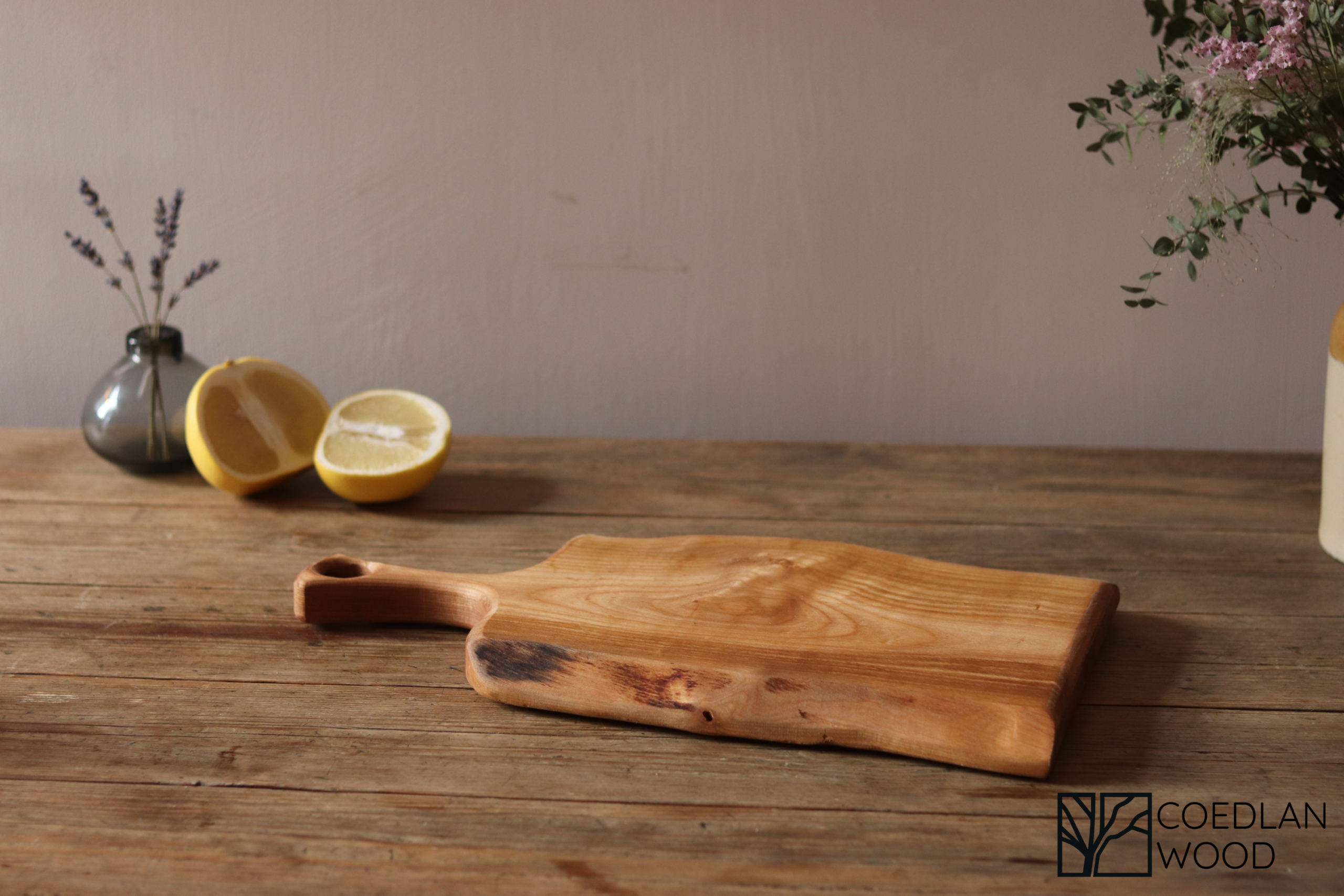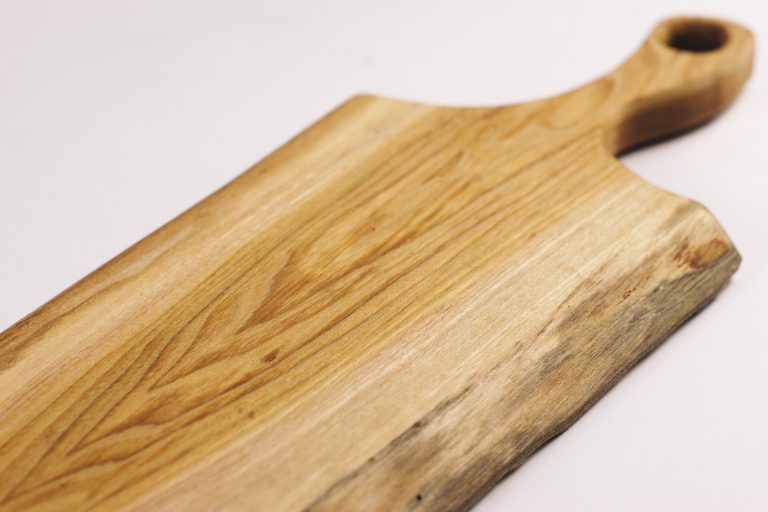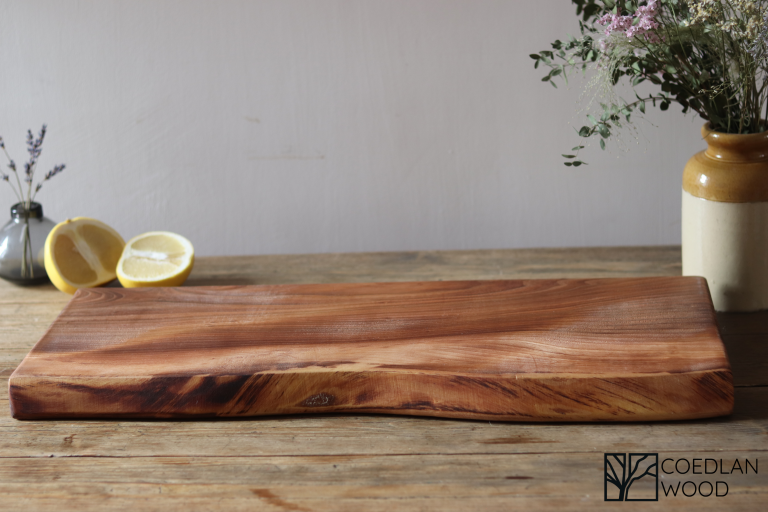A wooden chopping board isn’t just a practical kitchen essential – it’s also a piece of craftsmanship that can last for many years with the right care.
At Coedlan Wood, many of our boards have live edges, knots, and natural grain patterns, giving each one a unique look and character.
This guide will walk you through how to clean, oil, and maintain a wooden chopping board.
How to Clean a Wooden Chopping Board
Wood is naturally porous, so it’s important to clean it properly without damaging the grain.
- Hand wash only – Never put your wooden chopping board in the dishwasher, and don’t soak it in water. Both can cause warping and cracks.
- Use mild soap – Rinse your board under warm water with a drop of gentle dish soap and a soft cloth or sponge.
- Dry immediately – Wipe the board and stand it on its edge so air can circulate around both sides.
Removing Stains and Odours
Over time, strong flavours like onion, garlic, or beetroot can leave marks or smells. Here’s how to tackle them naturally:
- Salt and lemon method – Sprinkle coarse salt on the board, then scrub with half a lemon. Rinse and dry thoroughly.
- Baking soda paste – For stubborn stains, mix baking soda with water into a paste, apply gently, then rinse.
This method is perfect for keeping your board fresh without using harsh chemicals.
How to Oil a Wooden Chopping Board
The most important part of wooden chopping board care is regular oiling. It keeps the wood hydrated, prevents cracks, and deepens the natural colour.
- What oil to use: Choose a food-safe board oil such as mineral oil, or a beeswax blend. Avoid olive oil or vegetable oil, as they can turn rancid.
- How often: For boards used daily, oil once a month. If your board looks dry, it’s time to oil.
- How to apply:
- Pour a small amount of oil onto the board.
- Rub in with a soft cloth, covering all surfaces, edges, and any live edge bark.
- Leave to soak in for a few hours or overnight.
- Wipe away excess oil before using.
Companies like The Cornish Chopping Board Company sell reasonably priced mineral oil for chopping boards and a mineral oil/beeswax blend.
Tip: Pair your board with natural wood wax for extra protection and a satin finish.
Caring for Live Edge & Knotty Boards
Many of our live edge chopping boards have bark, knots, and natural character that make them one-of-a-kind. These features just need a little extra care:
- Keep crumbs out of crevices – Use a soft brush or clean toothbrush to reach textured areas.
- Expect natural movement – Wood expands and contracts with temperature changes. Small splits around knots or live edges are normal. Regular oiling reduces this.
- Avoid extremes – Don’t leave your board near radiators, ovens, or in direct sunlight for long periods.
Every Coedlan Wood chopping board is unique, and with the right care, its natural features will only become more beautiful over time.
Everyday Tips for Wooden Chopping Board Care
- Use one side for cutting, and keep the other side “showroom ready” for serving.
- Avoid raw meat on textured boards – instead, keep a smooth plastic board for raw meat.
- Treat your board like fine furniture: clean, dry, oil, repeat.
A Wooden Chopping Board That Lasts a Lifetime
A well-looked-after wooden board isn’t just a tool – it’s an investment. With simple maintenance, it will last for years, becoming richer in colour and character as time goes on.
At Coedlan Wood, every board we make is handcrafted from carefully chosen timber, full of life and individuality. From rustic live edge designs to smooth, polished serving boards, we’ve created something for every kitchen.
Ready to find yours? Explore our collection of handmade wooden chopping boards today.








